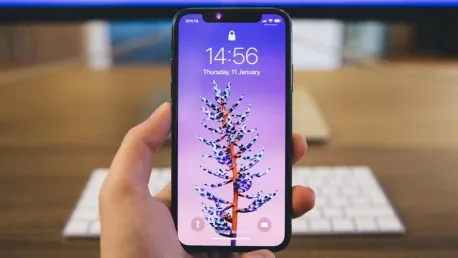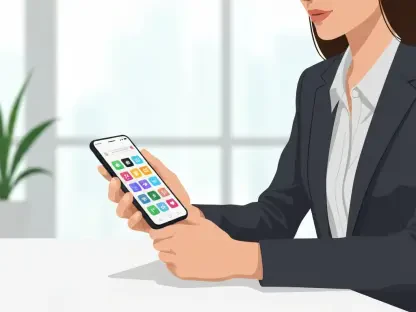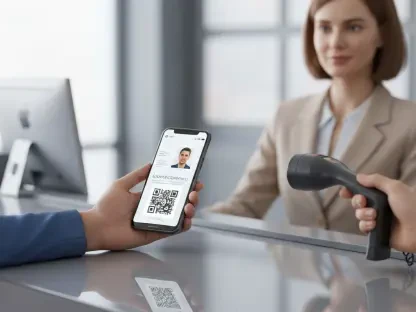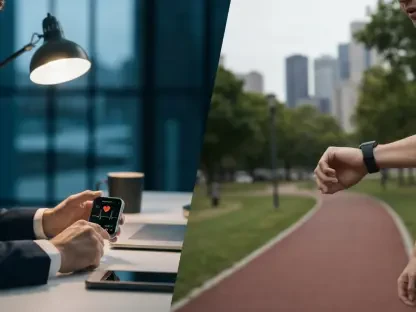Apple recently announced its new, long-awaited iPhone 8, 8 Plus, and iPhone X. While the iPhone 8 is more of an incremental update to last year’s iPhone 7, the iPhone X touts a completely new design and set of features. Needless to say, the latter has overshadowed its peers, thanks to the dramatic changes it brings to apple’s lineup. However, are these features enough to justify the price gap for enterprise users or are you better off sticking to a more affordable handset? Let’s look at the different aspects you should take into account when considering the new iPhone X for own business needs or your employees’.
Screen
Let’s start with the obvious: the iPhone X’s Super Retina Display is significantly larger than its predecessors’, even though its body is smaller than that of the Plus range. This time around, Apple took advantage of the phone’s entire front and expanded the screen to its edges, aside from a small notch reserved for the Face ID/front-facing camera, speaker and sensors. Despite its asymmetry, the screen looks great – but how can it enhance your work? The extra real estate makes the phone better-suited for productivity tasks and the enhanced pixel density will make various tasks easier to complete on-the-go, such as reviewing and editing text documents, filling in various forms, and even adding quick edits to spreadsheets. Furthermore, the new Super AMOLED screen is ideal for light image editing.
In short, if your work requires frequent on-the-go work involving documents or images, the enhanced screen will definitely benefit your business. However, the screen alone is not necessarily a reason to go for the iPhone X, since there are other, more affordable smartphones with similar, if not better screen real estate. This decision depends a lot on how reliant you are on Apple’s device ecosystem.
Speed
According to Apple, the A11 chipsets in the newly-released phones deliver 25% faster CPU and 30% faster graphics performance than the A10 in the iPhone 7. The iPhone X has an extra 1 GB RAM compared to the iPhone, yet due to the former’s larger screen, they end up delivering similar performance.
Obviously, the extra speed will help you get things done faster, but unless you’re doing intense graphics or video editing on your phone, the perks for an enterprise user will be limited. If your current devices are in need of an upgrade and you’re looking for something snappier without the extra screen real estate, the iPhone 8 would be better suited for you than the iPhone X.
Security
One of the main highlights of Apple’s event was the introduction of Face ID. Unlike its predecessors (and the current generation iPhone 8), the iPhone X doesn’t use Touch ID, since it doesn’t have a button anymore. Instead, the user can unlock it by simply facing the screen. The user is authenticated based on face recognition. This process is reportedly unhindered by make-up or users gradually growing beards.
However, it’s still arguable that a passcode or password is still more secure than either Touch ID or Face ID. In that case, what’s left is the convenience of unlocking your phone by looking at it. Would those extra split seconds allow your employees to get more work done? Chances are slim, but in the end each business has its unique needs.
Battery
Usually, when Apple introduces a new iPhone, it’s not only faster – it’s also more efficient in terms of power usage, whether that means offering faster speeds and the same battery life as the previous model, or both increased battery life and performance. According to Apple, the iPhone X lasts up to 2 hours longer than iPhone 7 and offers 7 extra hours of talk time. That could be an asset for an employee that needs to be on the phone a lot. But then again, the Samsung Galaxy S8, which is also a flagship phone, offers up to 20 hours of talk time and costs around $500 less, so you don’t need the iPhone X for this feature.
The iPhone X is Apple’s first wireless charging-enabled device and it also has fast-charging capabilities. While wireless charging will be possible with any Qi charging mat, the iPhone X will only be able to fast-charge using a USB-C adapter. In a somewhat baffling move, Apple only bundled the regular USB power adaptor with the iPhone X, so fast charging isn’t available out of the box. In order to get it, you’ll have to spend at least an extra $49 on a 29W USB-C Power Adapter and $25 on a USB-C to Lightning Cable.
Price & availability
It’s safe to say that the iPhone X is one of the most expensive phones ever released, at $999 (before tax) for the basic 64 GB model. That’s $300 more than the iPhone 8 and $200 more than the iPhone 8 Plus at the same storage capacities. That price puts the iPhone X well in the luxury bracket, even more so than its predecessors. From a consumer standpoint, it’s a matter of personal choice whether you want to spend that amount on a phone, but enterprise buyers have to keep a budget in mind – and chances are this phone would exceed most budgets.
One of the major issues with the iPhone X at the moment is its limited availability. iPhones in general are notoriously hard to get a hold of immediately after launch, and the iPhone X is even more so thanks to the complexity of component manufacture. The official release date is set for November 3, with pre-orders going live on October 27. Furthermore, chances are that stocks will be limited well into 2018, since Mashable reported that iPhone X production is only expected to start in mid-October and ramp up towards the end of the year.
Conclusion
Overall, it’s apparent that the iPhone X has very few, if no stand-out features that would truly benefit enterprise users, at least compared to the iPhone 8 or other flagship phones. Of course, that doesn’t mean it’s not an excellent phone if you want to treat your employees – and you’re willing to wait for it to come in stock. However, looking strictly at ROI, you’re probably better off going for the iPhone 8 or another flagship phone, based on your preferred OS.









